Paella 101 At Duende
Last week, I got a lesson in paella-making from the source: Chef-Owner Paul Canales of the Duende in Oakland.
And what a delicious and inspired one it was.
After all, the Uptown restaurant is all about Spanish and Basque food spotlighting the best of Northern California’s bounty. Duende features four paellas on the menu, including the very popular Arroz Negro, made with squid ink for an unmistakable bold color.
Along with a handful of other food writers, I crowded into the restaurant kitchen to watch Canales demonstrate that dish. The Moors brought rice to Spain, he explained, and paellas first gained popularity in the 1840s in and around Valencia. Canales’ father is of Basque heritage, a region that didn’t necessarily specialize in risotto. But it’s a specialty Canales has long loved, and studied, having traveled throughout Spain.
Like Italian risotto, it’s a dish that’s really all about the rice, with the toppings accentuating it, but not smothering it.
The Spanish Table, with locations in Berkeley, Mill Valley, and San Francisco, is a great place to pick up rice, paella pans, and most anything else you might need for a Spanish-style feast. As for squid ink, you can find it at more upscale grocery stores, such as Draeger’s, where it’s often sold frozen.
A well-seasoned sofrito is key to a good paella, Canales explained. Sofrito is to Spanish cooking what mire poix is to French cooking, an essential blend of onion, garlic, tomato and saffron cooked down to impart foundational flavor. Canales is partial to saffron from northern Iran, which costs twice as much. It’s so fragrant that when he opened the jar and poured some into a bowl, you could smell it two feet away.
Once the sofrito is ready, he adds hot broth and squid ink to the pan on the stovetop, before sliding it into the oven. Purists might consider that sacrilege, as paella is traditionally cooked over an open fire. Canales used the oven for practicality. “I want a controlled environment that allows enough evaporation,” he said. “Plus, I only have so many burners.”
Once the broth, squid ink and rice combine with a quick stir, resist any urge to stir any further.
After a few minutes, he removes the pan from the oven and drapes pieces of rockfish and mussels over the top of the rice before placing it back in the oven for 3 more minutes. Meantime, he mixes up thinly shaved fennel, pickled onions and Pasilla peppers with lemon juice, salt and olive oil — a fresh salad garnish to finish the dish.
The prized part of any paella is the socarrat, the coveted crispy layer on the bottom of the pan, which he achieves by putting the pan back on a burner for a few minutes. It’s tricky when you are using squid ink, though, because it burns easily. That’s why he advises in the accompanying recipe to nix the socarrat at home if using squid ink. For other paellas without squid ink in them, after the paella is done in the oven, finish cooking it on the stove top on medium heat for 2 minutes, and a bottom crust should develop.
When satisfied with the paella, he garnishes it with the salad, along with house-made allioli and hot sauce. But we can’t dig in quite yet. Canales likes to have the paella sit and rest for a few minutes before serving it to allow “all the flavors to become friends with one another.”
To go along with this magnificent paella? A turmeric cocktail created by Bar Manager Chase Henriksen. He shows us how he simmers sugar, water, fresh turmeric root, orange peels, lemongrass, cardamom, coriander and black pepper corns to create a syrup with a golden-orange glow.
It’s heady with spices and that dusty-citrusy flavor of turmeric. It makes for a delightful cocktail. It also is wonderful stirred into hot black tea, as I found out with a bottle he sent me home with.
Finally, it was time to sit down to paella, along with paper-thin slices of pork loin he has been curing with pimenton since February; signature ensalada de col, a mountain of shaved Savoy cabbage, Mahon cheese, green olives and pistachios; patatas bravas with aioli; and Spanish tortilla shot through with sweet potato.
For dessert, there were glasses of dry sherry, and servings of almond cake and chocolate flan.
Canales sent us home with recipes, plus rice, sofrito, and chorizo to try our hand at making our own paella at home. I added fresh shrimp (a sample from the American Shrimp Company), cremini mushrooms, and a shredded kale salad to my version, which I improvised in a Dutch oven, since I didn’t have a paella pan at home.
The method was straightforward, and the results incredible. So much so that I am sold on buying a real paella pan now. Astound your friends and family by making your own paella with the recipes below.
Arroz Negro with Rockfish, Sea Scallops, Snap Peas and Asparagus
(Serves 2 in a 30 cm paella pan)
1 medium onion, chopped finely
4 cloves garlic, minced
4 ounces olive oil
4 ounces tomato, peeled, seeded and chopped, with its liquid
1/4 teaspoon saffron threads, toasted and pounded to a powder
1 cup Bomba rice
3 cups fish broth, homemade, warmed to a simmer (or half low-sodium canned chicken broth and half water)
1 tablespoon squid ink or cuttlefish ink, thinned with a tablespoon of white wine
8 ounces rockfish fillet, cut into four pieces
4 sea scallops (size U10)
8 sugar snap peas, cut thin on long bias
4 spears asparagus, cut thin on long bias
1 lemon
1 ounce hot pepper sauce such as Piri Piri
2 ounces alliolli (see recipe below)
Preheat oven to 450 degrees. If using a convection oven, preheat to 400 degrees.
In a 30 cm paella pan, make the sofrito by heating all but 1 tablespoon of olive oil over medium heat, and adding the onion and garlic. Season the contents of the pan with a generous pinch of salt and cook until translucent. Add tomato, and cook until tomato begins to dry out and begin to form a residue on the pan. Add saffron, lower the heat, and briefly stir to incorporate.
Next, add the rice and stir to coat thoroughly with the sofrito in the paella pan. When the rice begins to turn translucent and you can see the inner kernel, raise the heat to high and add all of the stock and the squid ink. At this point, it is important to taste the liquid in the paella pan and adjust the seasoning by adding salt. As paella is not stirred during the cooking, it is important that the seasoning be correct at this point. It should taste very well seasoned, but not overly salty, as the flavors will concentrate in the rice.
When the contents of the pan reach a boil, cook on the stove for 5 minutes, and then carefully place the pan in the preheated oven. Cook the paella in the oven for approximately 7 minutes. Season the fish fillets and scallops with salt. After 7 minutes, return the paella to the stove and place over medium heat. Arrange the fish and scallops in the paella, gently pushing them into the rice so that they are nestled. Return the pan to the oven for approximately 3 minutes.
While the paella is cooking, place the snap peas and the asparagus in a small bowl, and season with salt, a squeeze of lemon and the remaining olive oil.
When the paella is finished cooking in the oven, return the pan to the stove and place over low heat to allow any remaining liquid to cook off. Be careful not to finish the paella over high heat to develop a crust or the ink will burn. In all, the rice should take about 16-18 minutes to cook through.
To finish the dish, scatter the snap peas and asparagus around the pan, dollop the allioli and drizzle on the hot sauce. Let rest a couple minutes, then serve directly from the pan onto warm plates.
Allioli
(Makes about 1 cup)
2 cloves garlic, pounded in a mortar and pestle with a little salt
1 egg yolk
4 ounces vegetable, grapeseed or safflower oil
4 ounces olive oil, best quality Spanish
1 tablespoon lemon juice
Salt, to taste
Place the garlic and egg yolk in a medium-sized mixing bowl, and stabilize it by putting it on top of a damp kitchen towel on the counter. Begin whisking in the vegetable oil drop by drop until an emulsion is formed, then drizzle the remaining vegetable oil and all the olive oil. Add the lemon juice and season to taste with salt. The allioli should be noticeably garlic. Any leftover allioli and be stored, covered in the fridge, for a couple of days.
Recipes from Chef-Owner Paul Canales of Duende
Duende’s Turmeric Tonic
(Makes about 1 quart)
1 quart water
3 stalks lemongrass, chopped into 1/4-inch rounds
1 cup fresh turmeric, chopped
3 Valencia oranges
3/4 quart sugar
1 tablespoon cardamom pods
1 tablespoon whole coriander
1 teaspoon whole black peppercorns
Add water to a large pot and place on medium heat on the stove. Add lemongrass and turmeric.
With a peeler, remove the zest from the oranges. Add peels to the pot. Squeeze juice from oranges into the pot. Add sugar and stir.
In a saute pan, lightly dry toast cardamom pods, coriander and black peppercorns on medium heat to release their aromas. Add them to the pot of liquid.
Heat until mixture boils; then reduce to a simmer for 20 minutes, stirring occasionally.
Strain mixture through a chinoise into a bowl. Allow to cool. Transfer tonic to a bottle and refrigerate.
To make a cocktail: Fill a glass with ice, add 1 ounce of the turmeric syrup, 1.5 ounces of quality white rum, and top with soda. Garnish with an orange twist.
From Chase Henriksen, bar manager at Duende

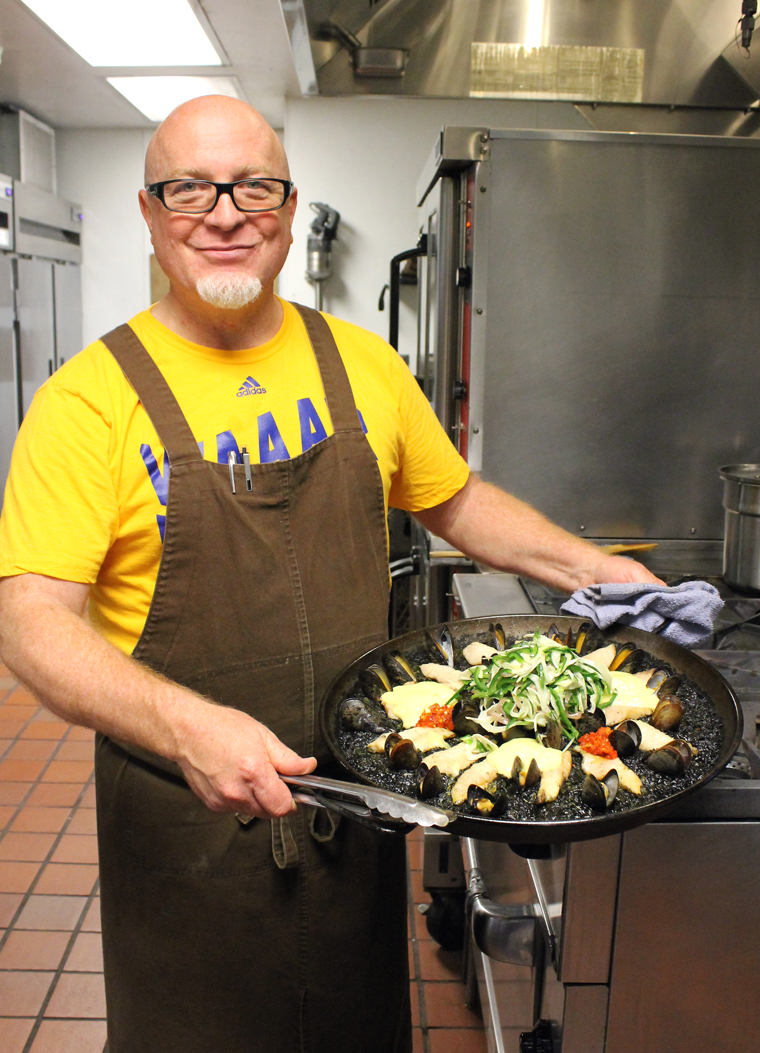

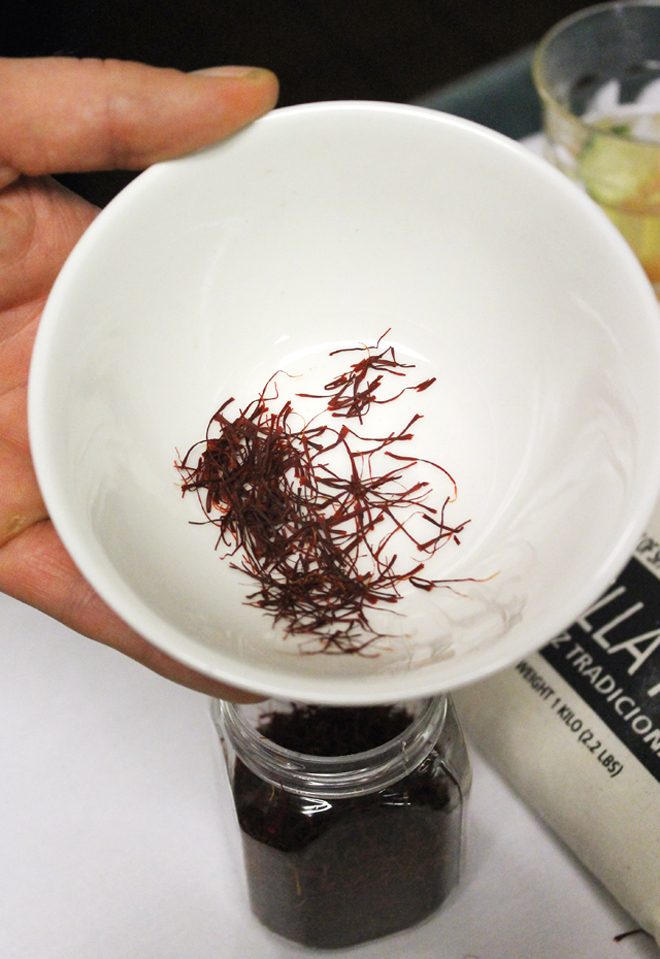
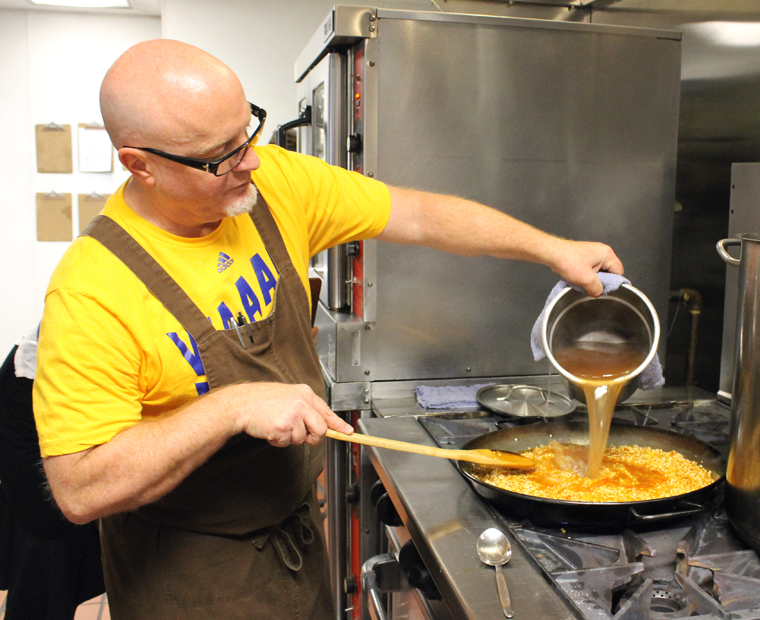
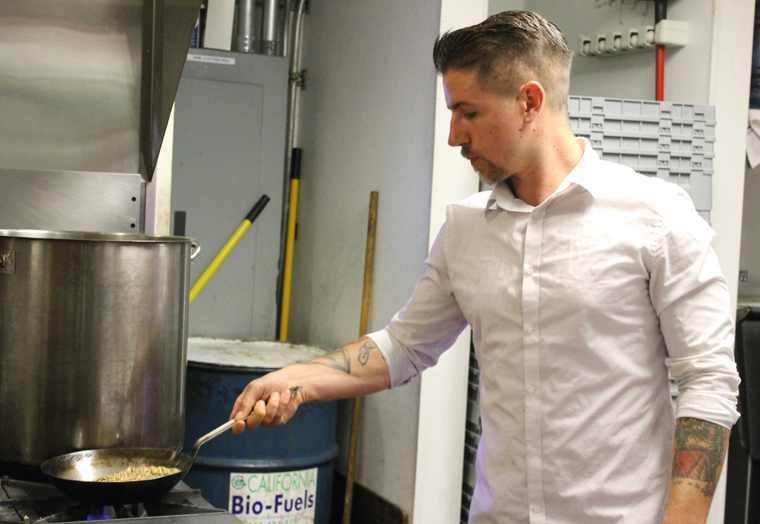
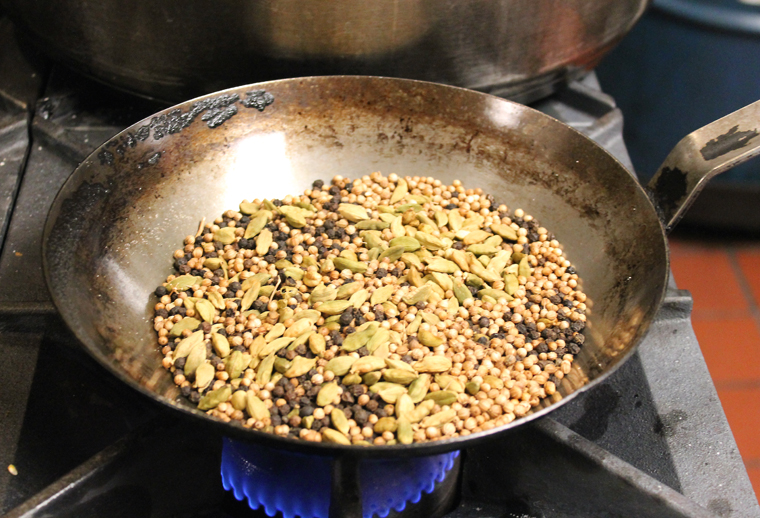
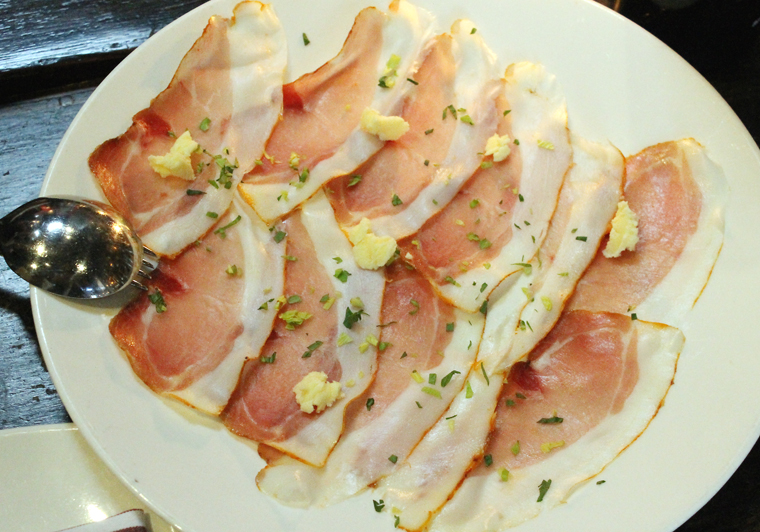
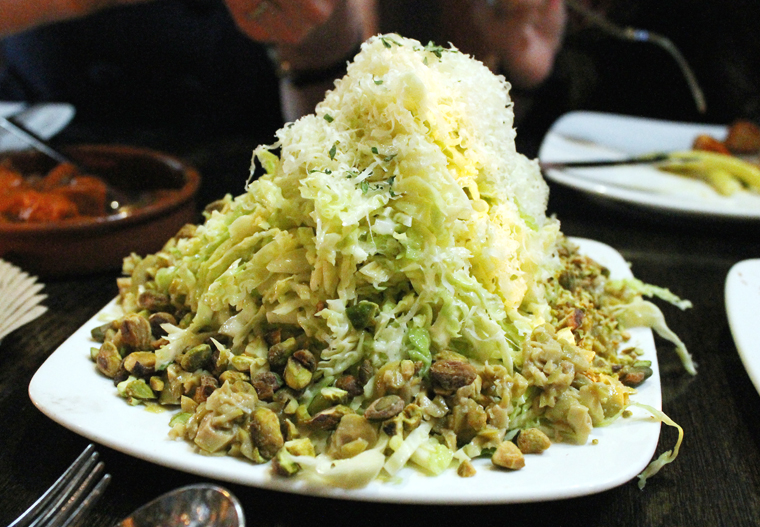
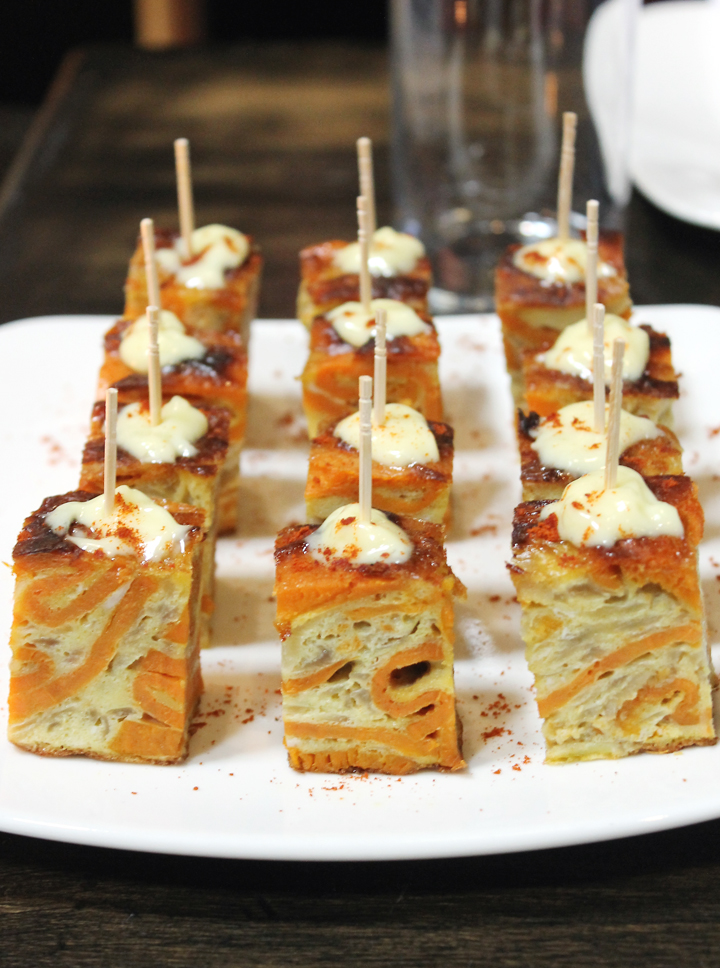
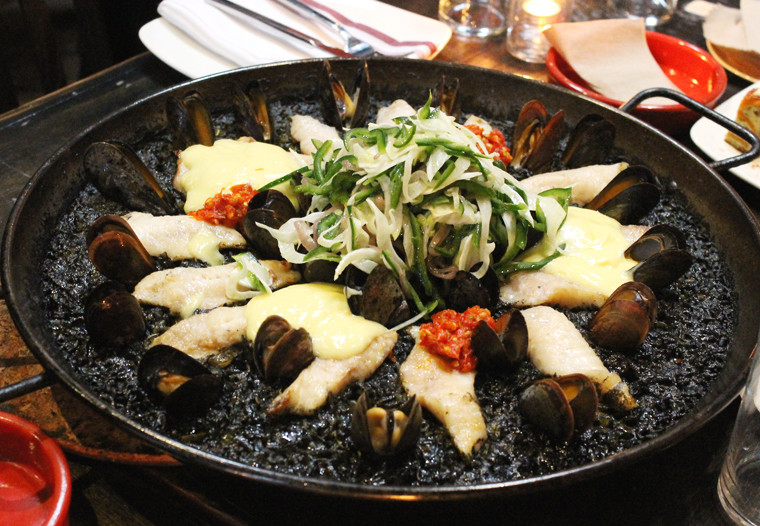
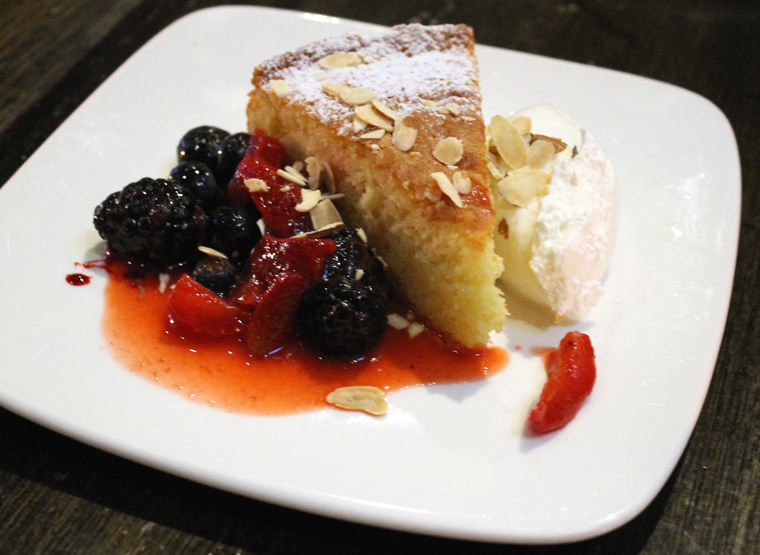
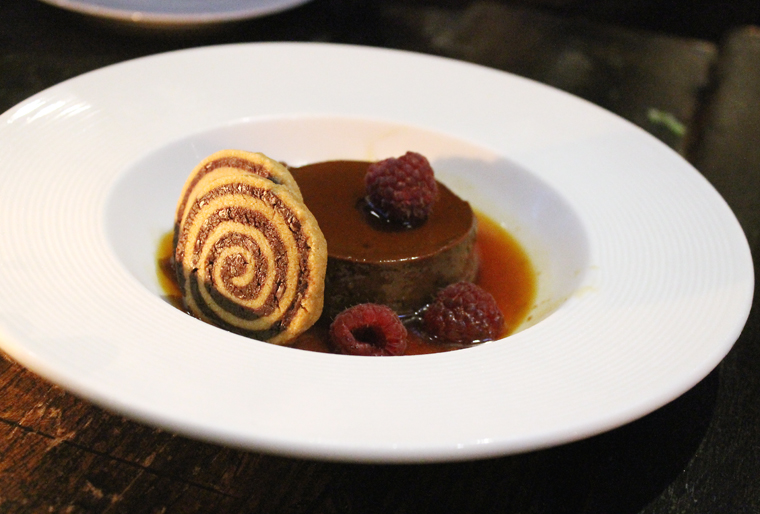
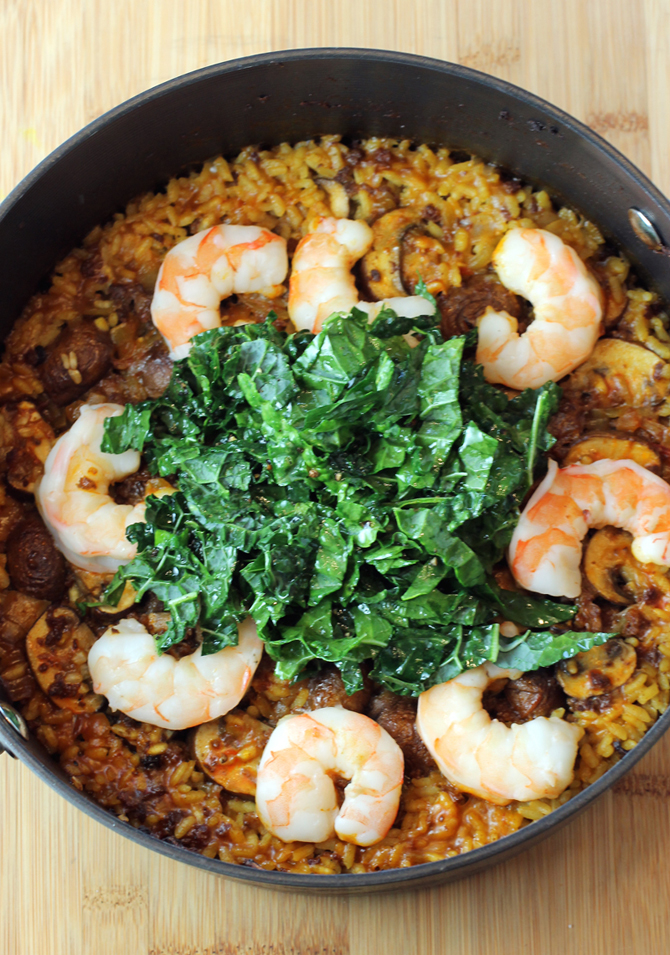
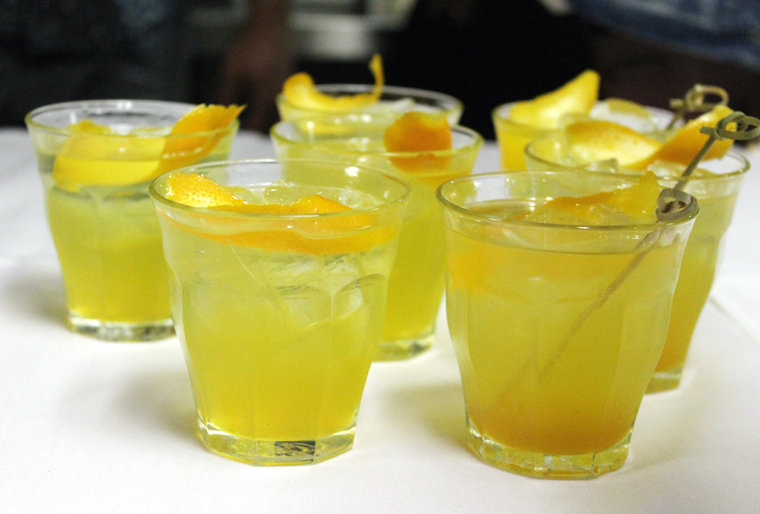
My favorite paella is Duende’s arroz negro!!!! It is SOOOOO delicious – I loved watching the process from the master himself – thanks for the insider look!
We haven’t attempted paella in several years. Looks like we need to make a trip to Spanish Table. 🙂
I love paella, but never made myself…yours look delicious Carolyn, and I like that you used some squid ink…and the turmeric tonic sounds so different and very exotic.
Have a wonderful week ahead 🙂
I love the rice of paella, it’s so comforting, I make it all the time. Go to Spanish Table and get yourself a paella pan right now! 😉
Love paella! And it’s been years since I’ve made a batch for some reason. Thanks for the refresher — brilliant recipe.